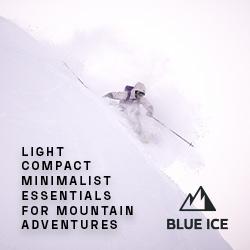Forecast for the Salt Lake Area Mountains

Issued by Nikki Champion on
Wednesday morning, January 8, 2020
Wednesday morning, January 8, 2020
A MODERATE danger exists on all mid and upper elevation aspects where fresh slabs of wind drifted snow can be found. A MODERATE danger remains for triggering a slab on the persistent weak layer of facets 12-18" down on southeast through southwest aspects. Both problems lead to heightened avalanche conditions on specific terrain features and today human triggered avalanches are possible.
A LOW danger exists on all low elevation aspects where generally safe avalanche conditions exist.

Low
Moderate
Considerable
High
Extreme
Learn how to read the forecast here
 Special Announcements
Special Announcements
Get discount lift tickets HERE. Thanks for this generous support from Utah Ski Resorts and Ski Utah. All proceeds go directly to supporting the UAC.
New to the backcountry or in need of a refresher? Consider taking a companion rescue course offered at Woodward Park City, January 14, 5:30-9 p.m.
 Weather and Snow
Weather and Snow
This morning, mountain temperatures are in the upper 20s and low 30s F at trailheads and upper teens to low 20s F at ridgetops. Winds backed to the southwest yesterday and have been blowing hard all afternoon and night, averaging between 20-30 mph with gusts near 70 mph along the highest elevations. Even the mid-elevation anemometers had gusts to 45 in the overnight hours.
Today, strong southwest winds will continue into the early morning hours before a quick-hitting storm sweeps through the valley. Winds will then turn northwesterly and decrease as a storm brings 4-6 inches of snow throughout the day. Most of the precipitation will occur midday, but light snowfall could continue into tomorrow morning. Temperatures will be in the upper 20s to low 30s F.
South-facing aspects will have a firm sun crust this morning, leaving the more desirable riding conditions in northerly terrain that doesn’t have wind damage.
South-facing aspects will have a firm sun crust this morning, leaving the more desirable riding conditions in northerly terrain that doesn’t have wind damage.
 Recent Avalanches
Recent Avalanches
Yesterday's avalanche activity was a bit more active with the sun and warm temperatures. Most of these avalanches were small wet sluffs running in steep south-facing terrain near rocks, cliffs, and trees. A few slab avalanches were also noted yesterday. On the south face of Gobblers Knob, Trent and I saw a natural soft slab avalanche on a steep face at 9800' below rocks that occurred sometime between 1 pm - 1:30 pm. The crown looked to be 12-18” deep which leads us to believe it occurred on the persistent weak layer of facets adjacent to the melt-freeze crust. This avalanche was about 150' wide and ran about 250'. See full observation HERE. Each - the Gobbler's and Pittsburgh Lake (see below/in upper AF) - were likely triggered by shallow wet loose sluffs cascading from above.
Photo of a natural avalanche on the south face of Gobblers Knob at 9800'..
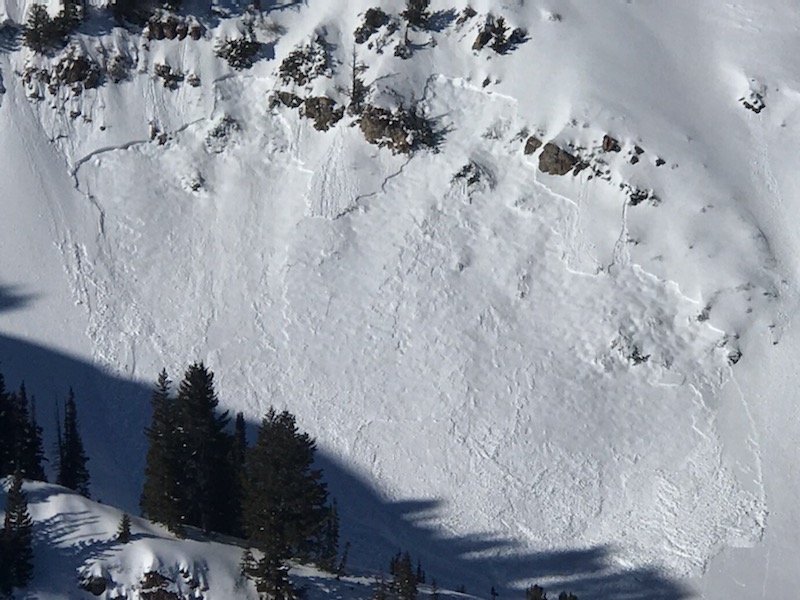
Yesterday another slab avalanche was noted in the Pittsburg lake area on a steep southeast aspect. See full observation HERE.
Photo of Slab Avalanche in Pittsburg lake zone of upper AF - south facing at 10,400'. (Photo: S. Zimmerman-Wall)
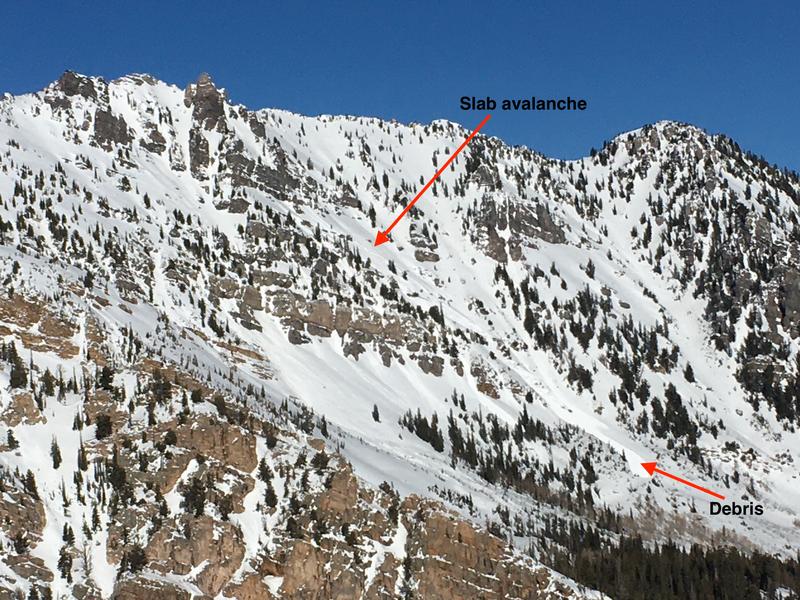
A full list of recent avalanches and observations can be found in the Menu bar above.
Avalanche Problem #1
Persistent Weak Layer
Type
Location
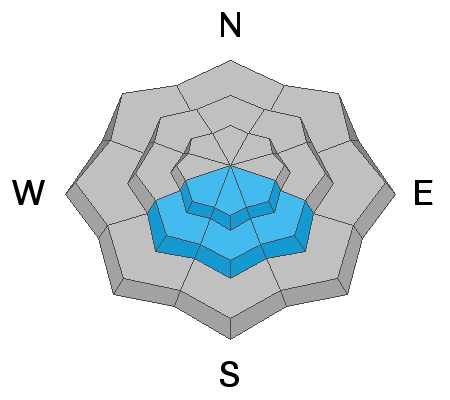
Likelihood
Size
Description
We have an uncommon snowpack structure on our hands. On southeast throughout the southwest facing terrain we have a thin layer of faceted grains sitting adjacent to a melt-freeze crust. This persistent weak layer is now buried 12-18” deep leading to an variable and unstable snowpack on these aspects.
Yesterday Trent and I witnessed a natural avalanche on a steep south-facing slope in Big Cottonwood Canyon. The crown looked to be 12-18 inches deep, leading us to believe it occurred on this persistent weak layer. This just confirms that this layer is unstable. As we continue to add more stress in the form of wind, water, and snow I expect to see more avalanches on this layer before it goes away.
This layer is spooky because it is not something we come to expect. South-facing terrain is not often an aspect we associate with persistent weak layers, and this layer might catch people off guard. If you do choose to ride in south-facing terrain, it is easy to look for this weak layer as it is currently only buried 12-18” deep in the snowpack. As the next storm system moves in to continue to investigate this layer, map the existence of this layer, and perform stability tests on this layer.
Photo of Trent looking at the layer buried 14" down and in between 2 crusts. This photo is from a full day investigating this layer in American Fork. See full observation HERE.
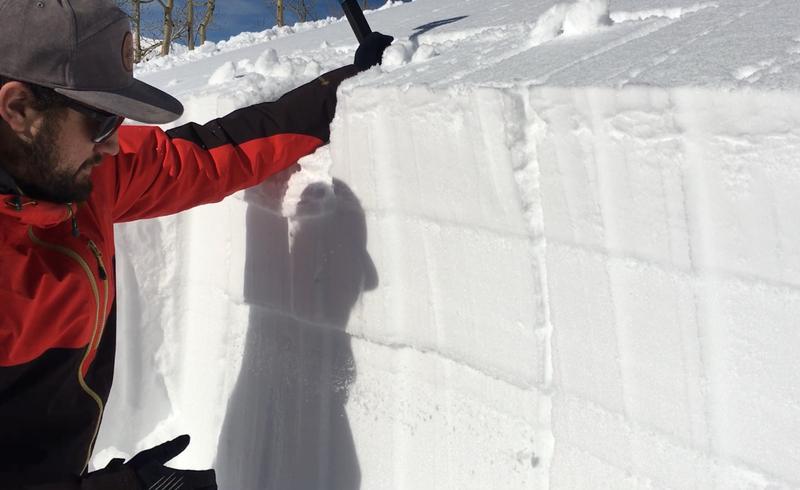
The good news is, non-wind drifted north-facing terrain is skiing well and provides a much better riding surface that the areas that host this persistent weak layer anyhow.
Avalanche Problem #2
Wind Drifted Snow
Type
Location
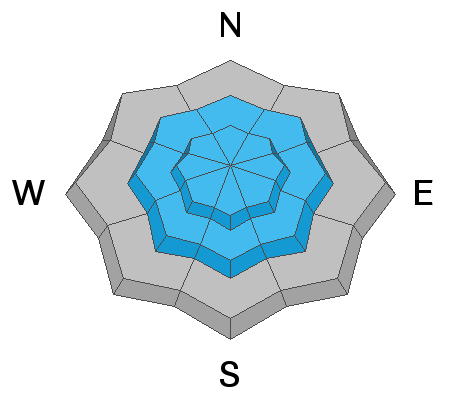
Likelihood
Size
Description
The winds haven't really shut off since the new years. Yesterday afternoon southwest winds began to pick up and snow was seen pluming off upper ridgetops. Last night into the early morning, gusts at the highest ridgelines were near 70 mph. Given that north-facing aspects still have soft snow available to transport expect to see signs of wind drifted snow near ridgelines, on leeward aspects, open bowls, and in cross-loaded features like gullies.
Look for slopes with signs of wind drifted snow and avoid them. They'll be more prominent on aspects with a north or easterly component, but scattered across the compass especially at the mid-elevations.
Photo of wind loading occurring in the Birthday Chutes. (Photo: S. Zimmerman-Wall)
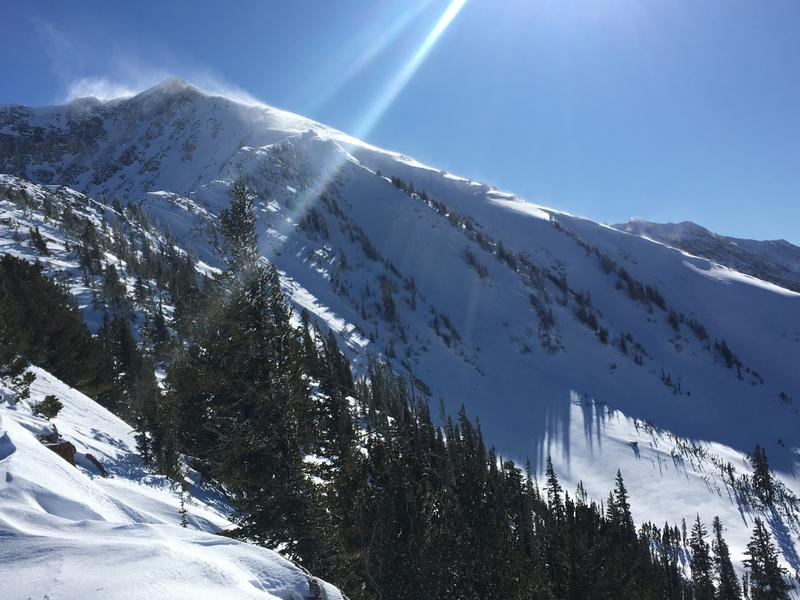
As the snow begins today, be watching for changing conditions. If precipitation totals come in higher than expected we could start to see new snow avalanches occurring on top of the sun crust and wind crusts. Look for signs of increasing instability, carefully evaluate the terrain, and consider the consequences in steep terrain.
General Announcements
This information does not apply to developed ski areas or highways where avalanche control is normally done. This forecast is from the U.S.D.A. Forest Service, which is solely responsible for its content. This forecast describes general avalanche conditions and local variations always occur.




